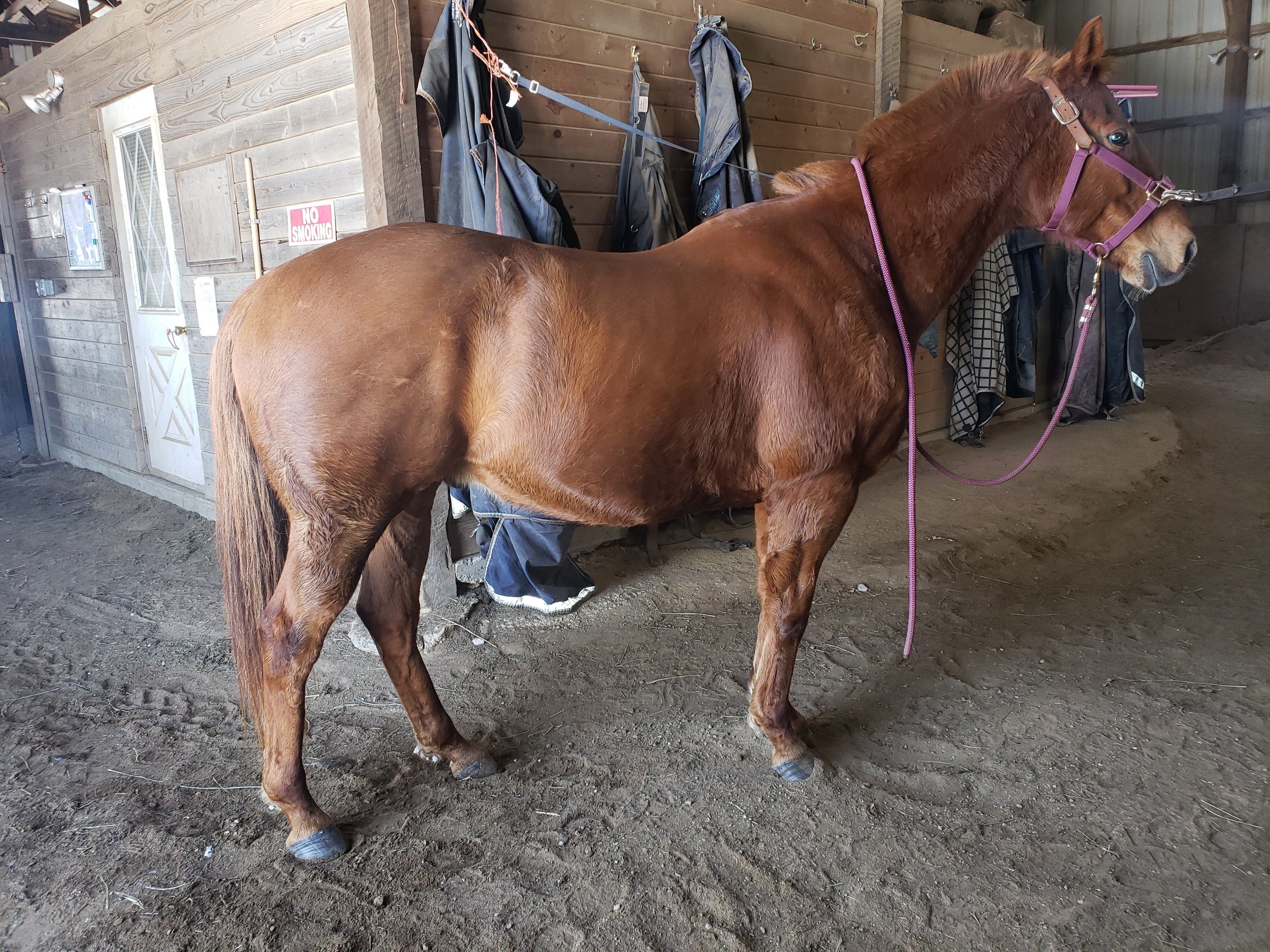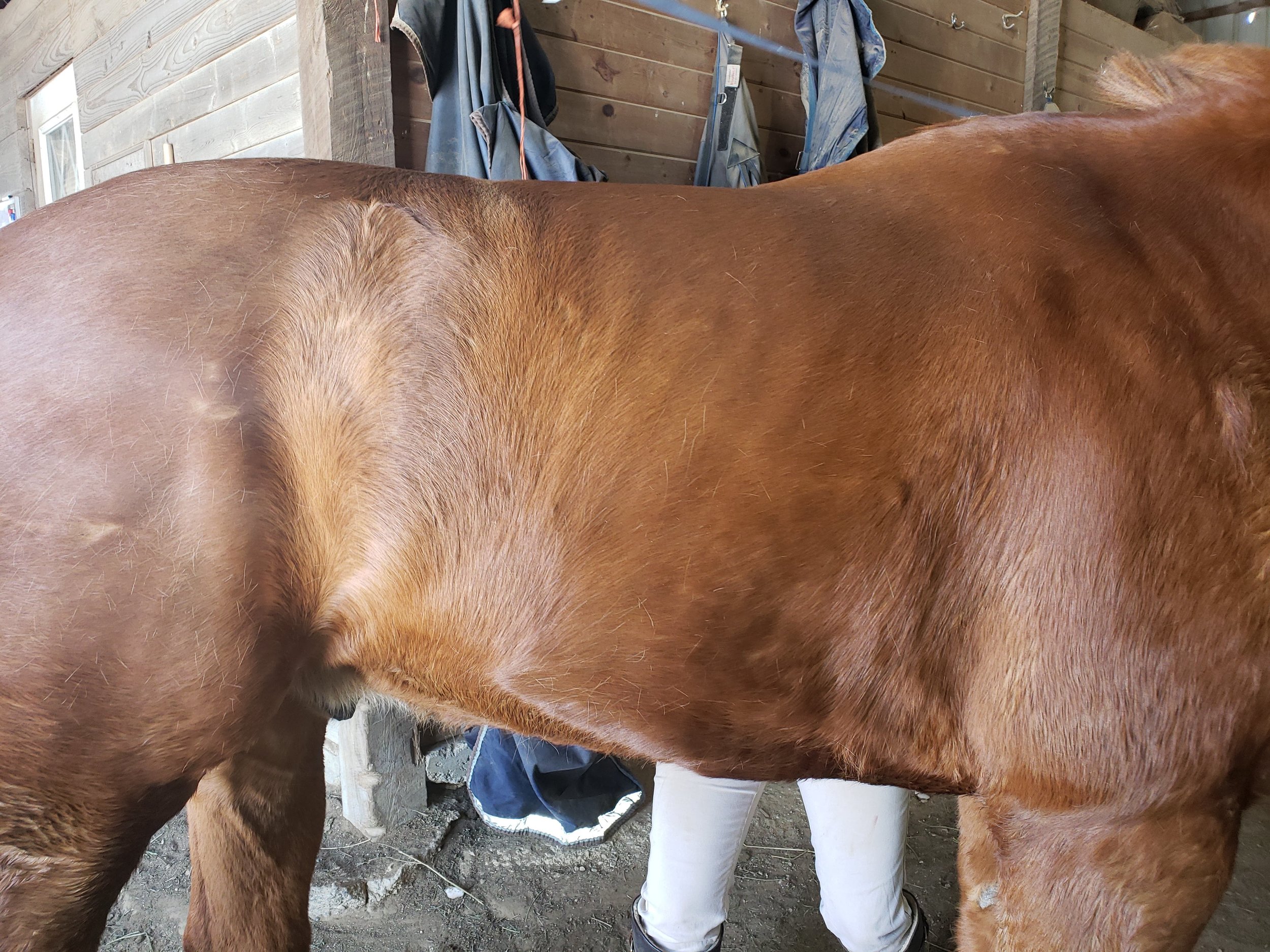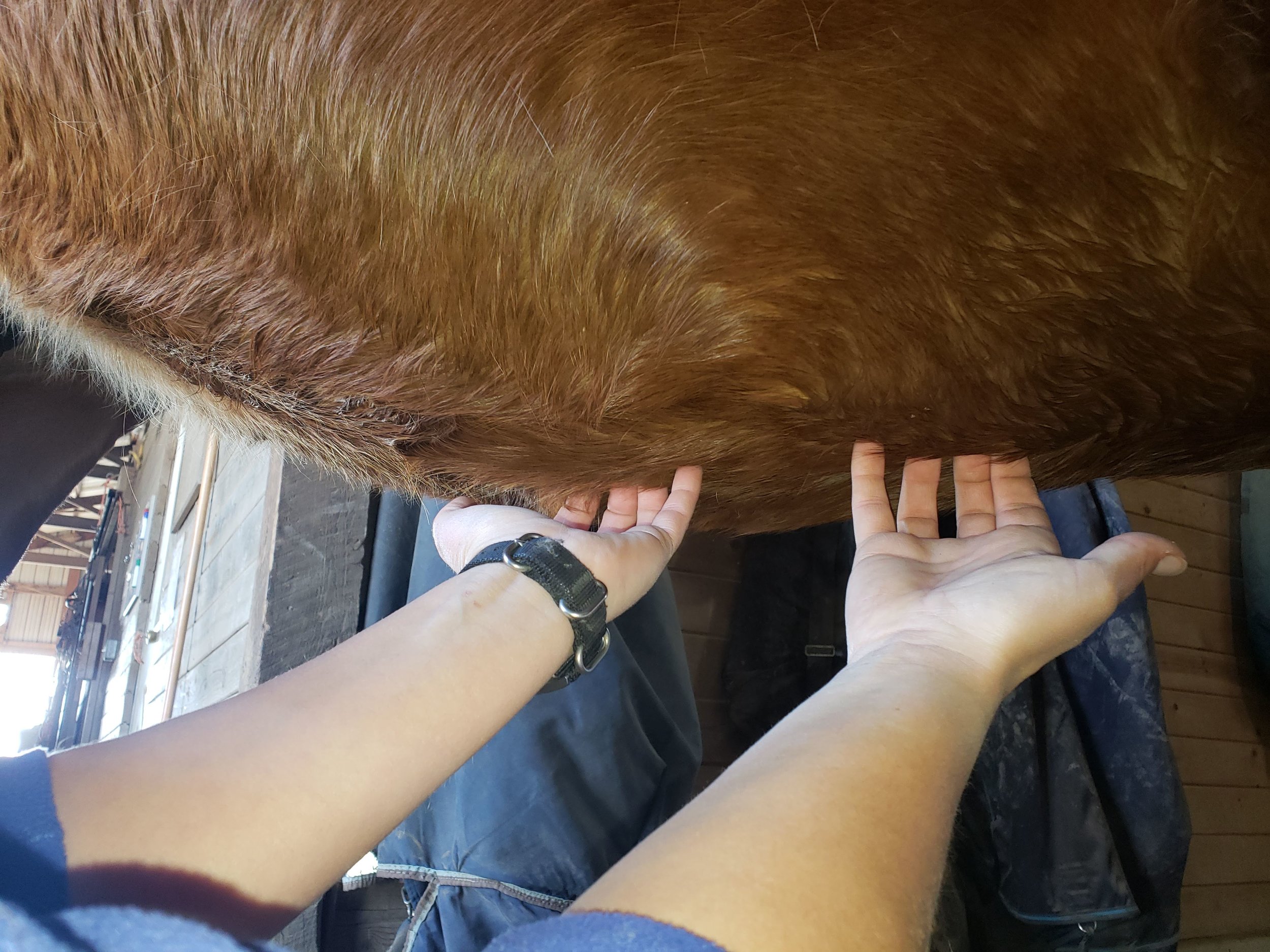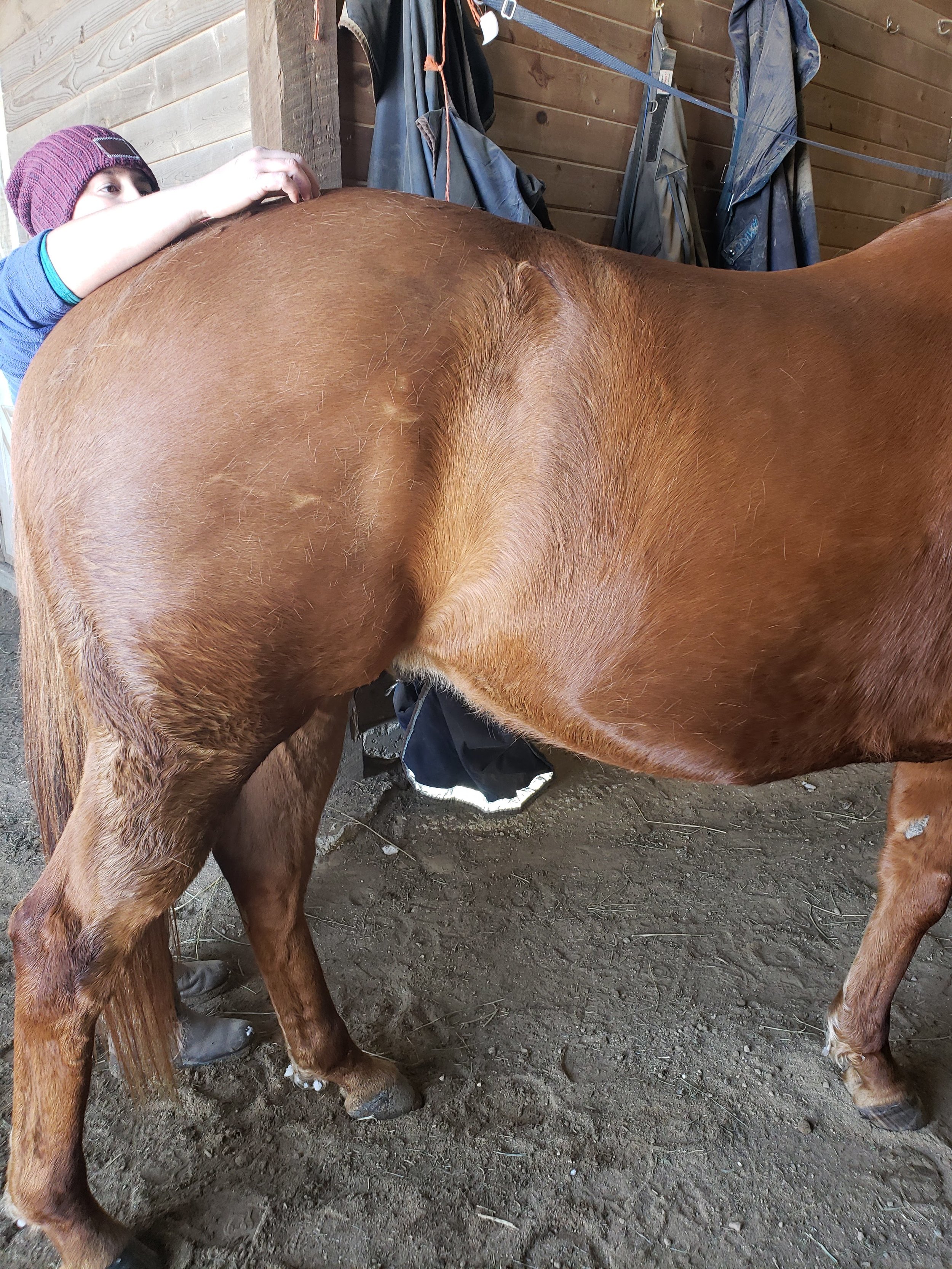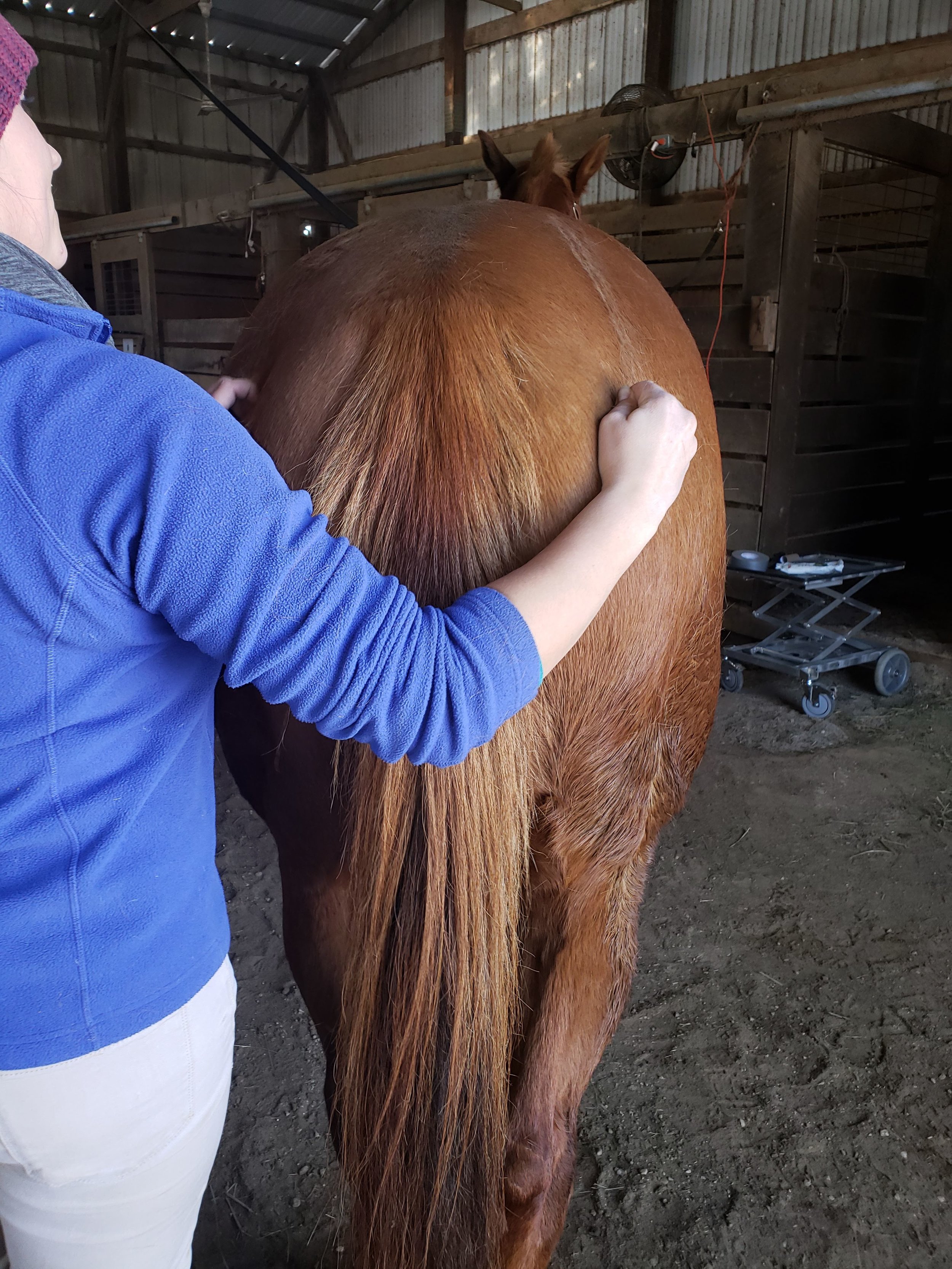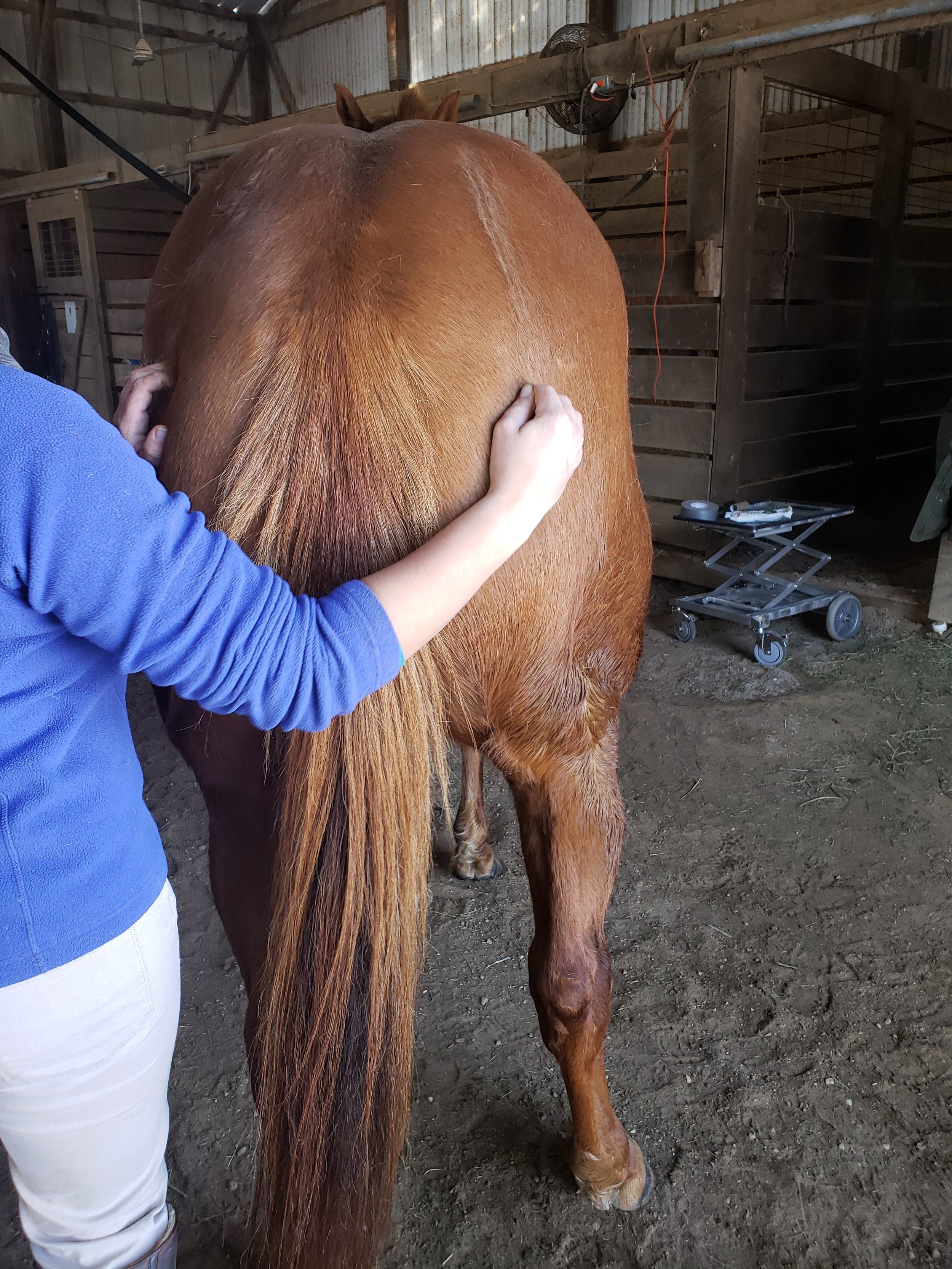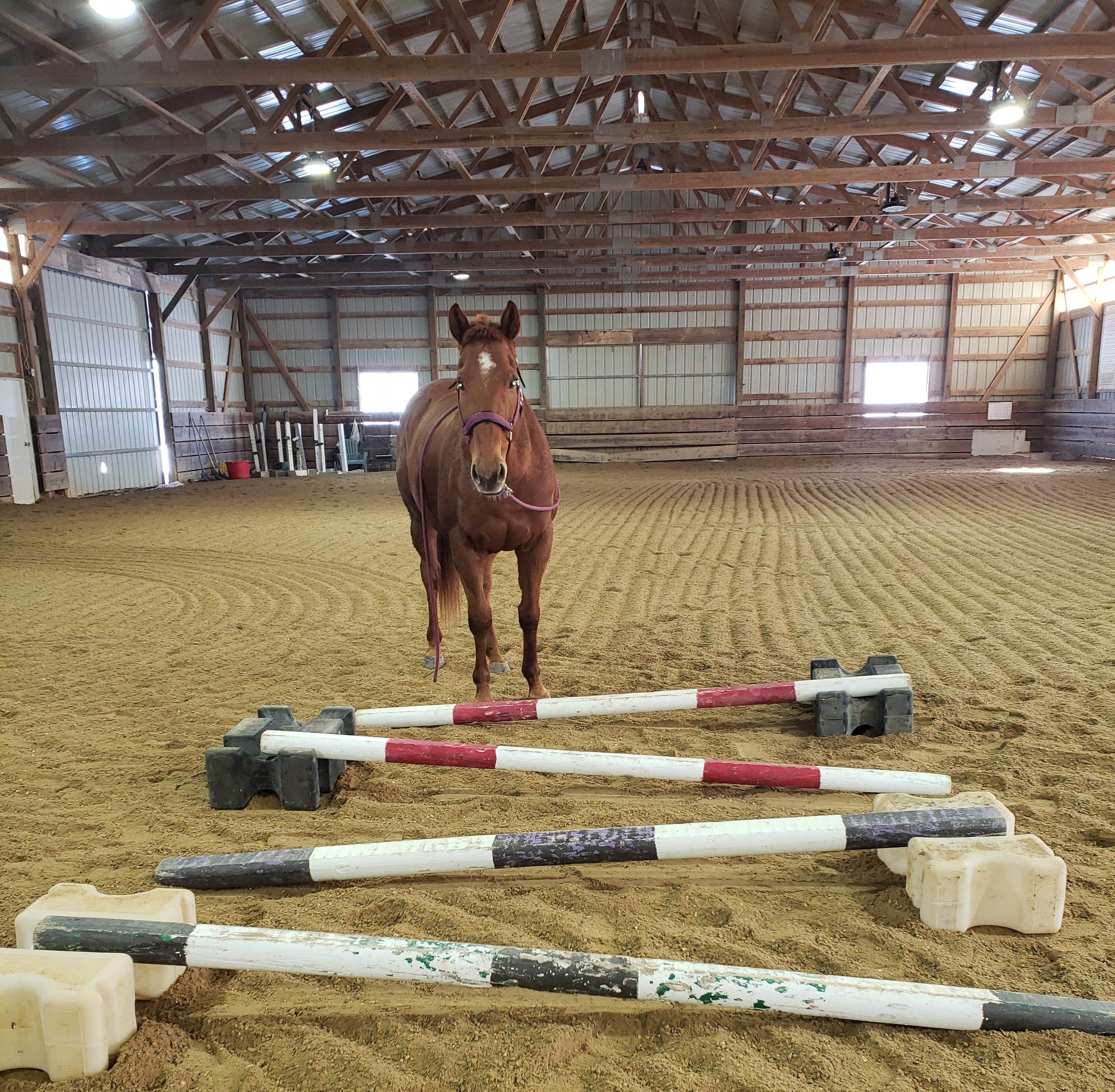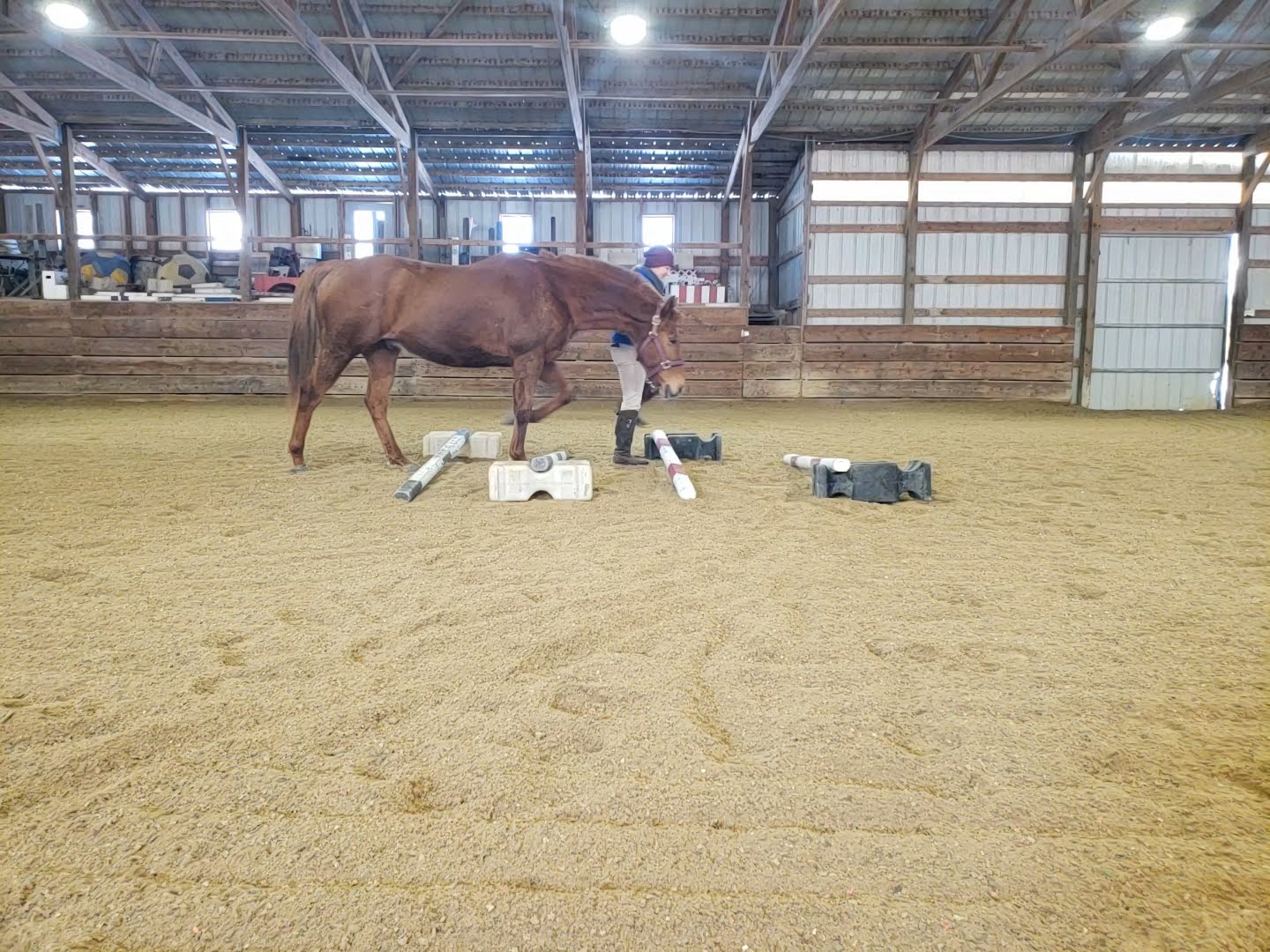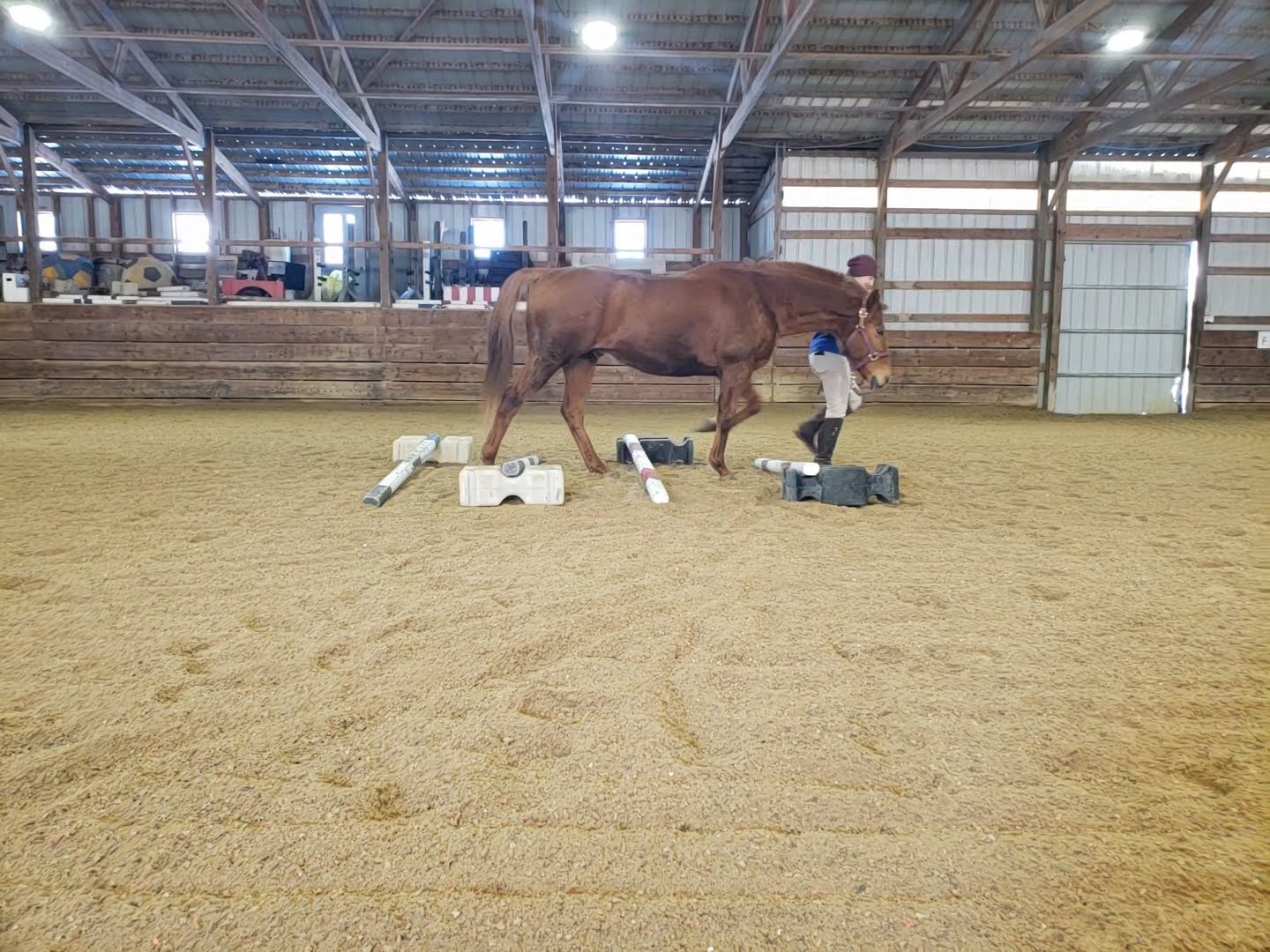“My horse has no topline!”
When discussing a horse’s topline, we are typically looking at the visual relationship between the horse’s vertebral spinous processes and the epaxial muscles alongside the spine. These muscles function to extend the spine (picture a racehorse stretched out in a full gallop, with his hind limbs pushed out behind him and his forelimbs stretched out ahead).
While it may not seem obvious, a horse’s hypaxial muscles play an important role in the appearance of the topline. These muscles function to flex the spine (picture a rodeo bronc, airborne, with his head, neck, and rump tucked down toward his belly).
A horse’s underlying conformation will have a significant effect on the appearance of his topline. His body condition also affects the appearance of the topline. A very thin horse’s spine will likely form a more prominent-looking ridge in the center of his back, while an overweight horse’s spine may be hidden in a central trough between ridges of fat.
If your horse appears to “lose his topline” very rapidly, or if he seems painful on palpation of his topline, be sure to consult your veterinarian to investigate potential underlying issues and contributing factors.
Belly lifts
This is a great exercise to integrate into any horse’s daily routine. Belly lifts encourage your horse to contract his abdominal muscles. Over time, strengthening these muscles can help improve your horse’s ability to support his spine and to work in a round, balanced frame. This exercise also gives your horse’s back and spine a nice stretch.
Be careful when introducing this exercise! If your horse has a history of being “girthy” or defensive about his belly being touched, this may not be a safe option.
Starting near his girth, gently scratch the center of his belly. Gradually increase pressure and move your hands further back along his belly until he contracts his abdominal muscles and you see his topline lift several inches. Continue scratching to cue your horse to hold this lift for several seconds, then allow him to relax. When starting out, plan to ask your horse to do 2-3 reps, once or twice daily. Over time, you can gradually add a rep or two at each session.
“My horse won’t use his hind end!”
In a variety of disciplines, equine athletes are often asked to travel in a “round” frame, using their hind end for forward impulsion. I am often asked to work on horses that feel “hollow,” “strung-out,” or “weak behind.” A multitude of factors must be investigated - does your horse have hock or stifle pain that makes him reluctant to fully engage his hindquarters? Does he have restricted motion in his pelvis, sacrum, or lumbar spine that needs to be adjusted by a chiropractor or veterinary spinal manipulation therapist?
Rump scratches
I frequently recommend this exercise for patients with soreness or restrictions in their pelvic, sacral, or lumbar regions. This exercise can help stretch and strengthen a horse’s hindquarters.
Be careful when introducing this exercise! Start by standing beside your horse’s hindquarters, and be sure to increase pressure gradually so as not to startle him. Starting just behind the highest point of his rump, gently scratch on both sides along the crease between his biceps femoris and semitendinosus muscles (see photo). Gradually increase pressure as you move your hands toward his tail until you see him tuck his tail and lift his croup. Continue scratching to cue your horse to hold this lift for several seconds, then allow him to relax. When starting out, plan to ask your horse to do 2-3 reps, once or twice daily. Over time, you can gradually add a rep or two at each session.
“My horse is dragging his toes!”
Each spring, I see a number of equine patients with subtle hind end lameness that I can trace to stifle discomfort. In inquiring about the horse’s history, I often hear that they are returning to work after a period of rest. Frequently, these horses have a telltale “skip” on the lunge line during canter-to-trot transitions. One possible explanation for this “catch” is an intermittent upward fixation of the patella. We can often achieve significant improvement in these horses by working to strengthen their quadriceps muscles, located along the front of the thigh. Exercises I like to recommend include hill work (going both up and downhill), ground poles, and cavaletti.
Stepping over ground poles and cavaletti can also be very beneficial for horses recovering from neurologic conditions such as Equine Protozoal Myeloencephalitis (EPM). The seemingly simple action of stepping over obstacles requires a complex communication between the muscles, nerves, spinal cord, brainstem, and brain. Variety is key when we are working to improve the function of neural pathways. Fortunately, ground poles and cavaletti can be arranged in countless variations to provide the horse’s nervous system with novel stimulation.
Ground poles/cavaletti
Whether we are working to strengthen a horse’s quadriceps or to strengthen his neurologic function, I recommend starting by asking a horse to walk over poles on the ground. Over time, we can make the exercise more challenging by adding more poles, changing the angle or distance between poles, and raising the poles several inches off the ground. This is one instance where “Dr. Google” can be counted on to provide inspiration. As with any conditioning program, changes should be made gradually to allow the horse to adjust to new patterns and avoid fatigue.



